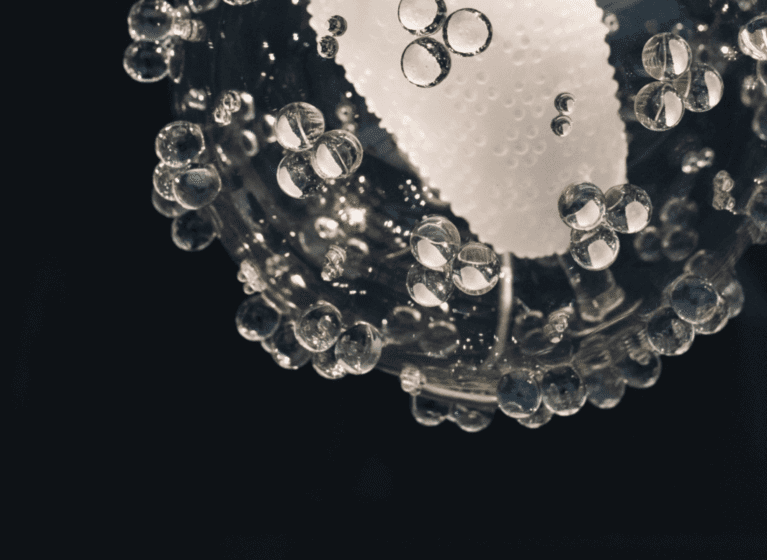Patents
Filing to grant
Preparation of patent specifications
Our patent attorneys have industry or postdoctoral experience in their respective fields of expertise and an interest in continuing education in these fields, which means that they are well placed to understand innovative technical concepts and to translate them into patent specifications.
A patent specification is a highly technical legal document, the purpose of which is twofold: first to disclose an invention to the public in language that will enable the public to work the invention when relevant patent rights have expired; and second, to identify the subject matter that the patent applicant or patent owner intends to claim exclusively for themselves. Please refer to our expertise areas to determine which of our team is best suited to assist you with the drafting process.
Australian national phase entry
Australian national phase applications must be filed by 31 months from the earliest claimed priority date. For national phase entry, generally all that is required from you is the PCT application number or International (WO) publication number and, if the specification is not in English, an English translation.
Australian Convention applications
Australia is a Convention country, meaning that an Australian application can be validly filed within 12 months from filing a priority application filed according to the Paris Convention for Protection of Industrial Property. All we require is an English copy of the specification to be filed and details of the priority document, applicant and inventors.
Examination and acceptance of an Australian patent application
An Australian application for a standard patent is not examined automatically. In order to have the application examined, a request for examination must first be filed. A request for examination must be filed within 2 months of receiving a direction from the Patent Office to file a request. There is an option to file a voluntary request for examination before a direction issues.
At the time of requesting examination the following information is required:
- details of how the applicant derives its rights to the invention from the inventor, for example by employment or assignment; and
- name of the applicant in the priority application (if convention priority is claimed). If the priority applicant is not the same as the applicant in Australia, details of how the applicant is entitled to claim priority from the priority application.
If there are lawful grounds of objection (eg the invention is not novel) a report will be issued giving the applicant 12 months to have the application accepted. If the application is not accepted by this time, it will lapse. One option is to file a divisional application if acceptance cannot be achieved by the due date.
Australia is a participating country in the Global Patent Prosecution Highway (GPPH) agreement.
Divisional applications
Australian divisional applications may currently be filed for subject matter disclosed but not claimed in a parent application, provided that the divisional application is filed within 3 months from advertisement of acceptance of the parent application. This type of application may be filed in response to a lack of unity objection (mirroring US divisional practice), where acceptance cannot be obtained within a given time period (mirroring US continuation practice) or where subject matter is to be added to the specification of the divisional application (mirroring US CIP practice).
Micro-organisms
Australia is a signatory to the Budapest Treaty on the International Recognition of the Deposit of Micro-organisms for the Purposes of Patent Procedure. If a patent applicant intends to rely on a micro-organism deposit made under this Treaty to satisfy written description requirement, the deposit must be made on or before the filing date of the priority application.
The published Australian patent specification must include details of the deposit, including the accession number of the deposit and the name of the depository institution. If the relevant details are not included in the published specification, it may be possible to request that the Australian Patent Office exercise its discretion to provide an extension of time to include this information in the specification.
It is also a requirement that a copy of the deposit receipt is provided to the Australian Patent Office prior to acceptance of the patent application. If the receipt is not in English, an English translation of the receipt must be provided. If the deposit was not made by the applicant, details of how the applicant is entitled to the deposit are required.
Innovation patents
Up until recently, Australia had a second tier patent, referred to as an innovation patent, intended to cover lower level inventions than those protected by standard patents. Innovation patents provide the same scope of rights and remedies for infringement as standard patents but have a lower threshold for patentability than standard patents and are therefore more likely to be valid.
With the phasing out of the innovation patent system, an innovation patent must have a filing date of 25 August 2021 or earlier. This means that it is now too late for new innovation patent applications to be filed. However, for existing PCT applications filed before this date, or for applications filed in Australia before this date, an innovation patent is still possible.
Extensions of time
An extension of time can be obtained for missing a deadline, such as entering the national phase or filing a convention application, requesting examination, etc, if the ordinary deadline to do so was missed as the result of:
- an error or omission by the applicant or their attorney; or
- circumstances beyond the control of the applicant.
To obtain an extension, it is necessary to provide evidence that the applicant had an intention to file the application prior to the deadline and an explanation of what caused the deadline to be missed. This evidence is usually in the form of a declaration by a person who has first-hand knowledge of the error or omission.
The granting of such an extension is at the discretion of the Patent Office. To maximise the chance of the extension being granted it is necessary to lodge the application accompanied by the extension request without delay as soon as the failure to file the application in time has been detected. Evidence can be prepared and filed a short time later.
Oppositions
There are two types of patent oppositions – substantive and procedural oppositions. Substantive oppositions include oppositions to the grant of a patent and oppositions to the grant of an extension of term of a patent relating to a pharmaceutical substance. Procedural oppositions include oppositions to amendments, extensions of time and grants of a licence.
Both types of oppositions commence by the opponent filing a notice of opposition. With some exceptions, there are fixed deadlines for taking every step in the opposition process. In general, the deadline for filing a notice of opposition for:
- a substantive opposition is 3 months from the advertisement by the Patent Office of acceptance of a standard patent application or an extension of term; and
- a procedural opposition is 2 months from the relevant advertisement such as acceptance of a request for an extension of time.
If you have an interest in a particular patent or application and are considering an opposition, it is imperative to locate the patent or application and monitor for any relevant advertisement on it by the Patent Office. We offer a searching and watch service to assist with the watching requirements of our clients.
For more information on oppositions, please review our contentious section.
Re-examination
Any person may request re-examination of a patent at any time during the term of a patent. Prior to grant there is no obligation on the Patent Office to re-examine a patent application in response to such a request. In contrast, once a patent has granted, the Patent Office has to conduct a re-examination of the patent on request from a third party. In some instances, re-examination of a patent application may be entered into through an opposition procedure.
Re-examination is an ex-parte proceeding. The party requesting re-examination compiles its documents and files them with the Australian Patent Office. Once the patentee (or patent applicant) is given an opportunity to respond, an examiner will consider the documents received by the requesting party and any responsive materials received from the patentee. The Patent Office then enters a dialogue with only the patentee in order to establish whether the claims are valid, either as currently framed or in an amended form proposed by the patentee. The requesting party takes no further part in the re-examination proceeding. This is in contrast to the inter-parte opposition procedure.
Pharmaceuticals
Australia has a patent term extension regime available for certain standard patents relating to pharmaceutical substances. The regime was enacted in recognition of the exceptionally long development time for pharmaceutical products and the impact this has on effective patent life. Eligible patents may have their term extended by up to five years.
Conditions that must be satisfied for the grant of an extension of term
- A pharmaceutical substance per se, or a pharmaceutical substance when produced by recombinant DNA technology, must be in substance disclosed in the patent and must fall within the scope of a claim.
- The pharmaceutical substance must have regulatory approval, that is, be included in the Australian Register of Therapeutic Goods (ARTG).
- There must be at least 5 years between the date the patent application was filed, and the date of first approval of any product containing the pharmaceutical substance.
Australia provides an automatic 5 year data exclusivity period for new products containing pharmaceutical actives.
Searching
Our attorneys are all trained in the formulation of searching strategies, whether for the purpose of determining the state of the art relating to an invention, competitor landscape searching or freedom to operate (FTO) analysis. At the option of our clients, we can perform searching in-house or contract searching out to any of a variety of specialist searching agents in our network, either in Australia or overseas. Please contact us to discuss your needs.
Designs
Filing to grant
A registered design protects one or more visual features of a product or a component part of a product. The visual features may be three-dimensional, such as the shape or configuration of a product, or two-dimensional, such as the pattern or ornamentation of the product. Even if they serve a functional purpose, these features can still be protected.
For a registered design to be valid, it must be new and distinctive over designs published anywhere in the world and designs publicly used in Australia.
Securing the earliest possible filing date is therefore important, as this is the date used to determine if your design is new and distinctive. There is a 12 month grace period for publication or public use by a designer or an owner of the design.
An Australian application can provide you with a priority date for overseas design applications, filed within six months of the Australian application. Similarly, if you have already filed an application for a design registration (or a design patent) overseas, an Australian application may use the filing date of the foreign application as its priority date, if your Australian application is filed within six months of the foreign application.
There is no substantive examination of design applications before registration in Australia. The design will be registered and appear on the register of designs following completion of a formalities check. The design can only be enforced after it has been examined and certified.
The initial term of registration is 5 years, renewable once up to a maximum term of 10 years.
Examination
Examination of a registered design is optional in Australia, unless the registered design is to be enforced.
You may request examination at any time after the design has been registered. Third parties can also request examination and lodge prior art material at any time after your design has been registered.
The examiner will conduct a search and consider whether the design is new and distinctive. A design is considered to be ‘new’ unless it is identical to another design. A design is considered to be ‘distinctive’ unless it is substantially similar in overall impression to another design. If the examiner is not satisfied that the design is new and distinctive you will be given an opportunity to respond.
If the examiner is satisfied that there are no grounds of invalidity, you will receive a certificate of examination and can enforce your certified registration. Alternatively, if the examiner’s objections cannot be overcome the registration is revoked. Our team has extensive experience in overcoming objections and securing certification.
Searching
Infringement searching
Developing and releasing a new product can involve substantial cost, as can responding to allegations of infringement of a registered design. To determine whether there is a risk of the new product infringing another’s registered design, we can perform designs infringement searching, based on product names or classifications. Following the search we can advise you on the likelihood of infringement of existing registered designs, whether the existing registered designs are likely valid, and options for avoiding the existing registered designs by designing around any blocking registrations.
Competitor and market watching
We can conduct periodic searching of the registered designs databases to monitor the filing activities of your key competitors. This can be performed in several jurisdictions and helps you stay informed of your competitors’ new products and designs. As well as watching specific competitors and undertaking analysis, we can monitor activity in a particular design field by maintaining a watch on a particular field of design activity or classification. A search of this type helps you stay one step ahead of new products entering your market segment or new competitors in the Australian market.









